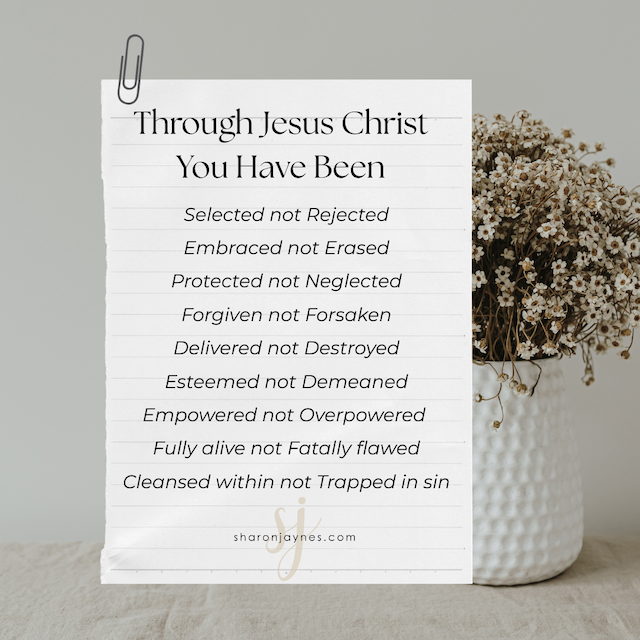The Cross Signs and Wonders Study Guide
The Cross Topic 4 in
Signs and Wonders Study Guide – PDF
Compiled by Geoff Waugh and Cecilia Estillore Oliver
Available on Amazon and Kindle with ‘Look inside’
Free airmail postage worldwide on The Book Depository
Topic 4 – The Cross
This former study guide for internal and external students is reproduced here as a resource for you to use and adapt. If copied, just acknowledge the source as From Signs and Wonders Study Guide on renewaljournal.com
Introduction
Jesus Christ’s cosmic, eternal victory over all evil on the cross is a central theme of the whole Bible. The Old Testament points to it, and is fulfilled in it. The Gospels announce and proclaim it with vivid details on Jesus’ life, death and resurrection. The Epistles explain its importance. Christ’s victory on the cross is the only basis for salvation in all its fullness, including the place signs and wonders have in demonstrating the power of the cross in all things.
From This Topic You Will Learn
- There is a direct relationship between The Cross and the Power of God.
- The significance of the cross is shown in how God reconciles all things and all peoples back to himself through Jesus’ death and resurrection.
- The death of Christ on the cross has overcome the powers of darkness and through belief in Jesus Christ and his death on the cross; we receive that same power over the devil and can live victoriously.
- Isaiah Chapter 53, the prophetic word about the Suffering Servant and Messiah, was fulfilled by Jesus Christ during his ministry (Matthew 8:16-17).
Topic Notes
BIBLICAL FOUNDATIONS CONCERNING THE CROSS
Isaiah 53: The Messianic Prophecy of the Ministry of Jesus Christ
Isaiah chapter 53 portrays the character, ministry, sufferings, death, and exaltation of the Messiah. Isaiah’s prophecy also anticipated the healing ministry of Jesus Christ. As a fulfilment of that prophecy Matthew wrote: When evening had come, they brought to him many who were demon-possessed. And he cast out the spirits with a word, and healed all who were sick, that it might be fulfilled which was spoken by Isaiah the prophet, saying: “He himself took our infirmities and bore our sicknesses.” (Mt. 8:16-17, cf. Isaiah 53:4).
Jesus quoted from Isaiah 53:12 at the Last Supper Passover meal: ‘It is written: “And he was numbered with the transgressors”; and I tell you that this must be fulfilled in me. Yes, what is written about me is reaching its fulfilment.’
The Substitutionary Atonement of Christ on the Cross
Throughout the scriptures we find evidence of the supernatural and miraculous signs and wonders pointing to the power of the cross and authenticating the preaching of the Word of God. Interestingly, there is a significant relationship between the Gospel and the Atoning Work of Jesus Christ on the cross. “The substitutionary atonement of Christ on the cross is the heart of the gospel.” That is the reason why “we preach Christ crucified” and nothing else lest we nullify the message we proclaim. In fact, “Christ’s atoning work on the cross is the centre of gravity in the New Testament Faith” (Matt. 20:28; Mark 10:45; John 12:27,31-33; Rom, 3:22-25; 5:8,9; 2 Cor.5;21; Gal.3:13; Col. 1:21-22; 1 Tim.2:6; Heb. 2:14; 9:14, 26-28; 10:10; 1 Pet.1:18-21; 2:24; 3:18; 1 Jn. 2:2; 3:5, 8; Rev.12:11) (Greig & Springer 1993:22).
Furthermore, “the power of the cross is first and foremost in the atonement and the forgiveness of all sin that the cross provides” (1 Jn. 2:2). Christ’s atoning work is also the “basis for all God’s work in our lives” as he sanctifies our soul and restores us from the brokenness of sin to wholeness (Greig & Springer 1993: 22).
The apostle Peter applies Isaiah 53:5 to the forgiveness of sin. He says of Christ, who himself bore our sins in his own body on the tree, that we, having died to sins, might live for righteousness – by whose stripes you were healed (1 Peter 2:24).
Jeffrey Niehaus explains this: Just as Isaiah portrays sin as disease (Isaiah 1:5, 6), Peter uses Isaiah’s words to inform us that the “healing” of Isaiah 53; 5 is first and foremost a healing from sin. That is the healing we find in the atonement. In the same vein, Peter goes on to quote Isaiah 53:6: “For you were like sheep going astray, but now you have returned to the Shepherd and Overseer of your souls” (1 Peter 2:25).
The work of the atonement is to heal us from sin and to return stray sheep to God, as Peter’s application of Isaiah 53:5, 6 makes clear. It makes physical healing possible (“He took up our infirmities” Isa. 53:4 and Matt. 8:16, 17) but does not necessarily guarantee it in this age to God’s people (Niehaus 1993: 50).
The atonement is central to our faith. Hence, if Christ and what he has done on the cross is the “cornerstone of Christianity” then the time of Christ’s incarnation, ministry, death, resurrection and ascension is the pivotal time in the Kingdom of God. Everything in the Old Testament – especially the sacrificial system – points to the cross, and everything since then looks back to it. That is the mystery of Christ’s death and the love of the Father for us (Wimber 1986:165).
The “Already-Not-Yet” Tension of Healing and the Miraculous
According to Gordon Fee, “healing is made possible by the atonement of the cross but is not necessarily guaranteed to be fully experienced by believers in this age.” (Greig & Springer 1993: 22). Fee says: Healing is provided for [in the atonement] because the atonement brought release from the…consequence of sin; nonetheless, since we have not yet received the redemption of our bodies, suffering and death are still our lot until the resurrection (Greig & Springer 1993:220.)
In other words, there is the “already-not-yet” tension of the kingdom of God in relation to healing and spiritual gifts, and the supernatural and the miraculous (Greig & Springer 1993:22; David 1993:125-127). This raises the issue of whether “healing is in the atonement” or not. According to R. A. Torrey, “healing is in the atonement,” that is, “based on what Jesus has done on the cross, we may experience 100 percent healing on earth.”
On the other hand, J. Sidlow Baxter asserts that “healing for our mortal bodies is not in the atonement.” Colin Brown agrees. He believes that “forgiveness of sins is based on covenant grace: God intends that everyone who trusts in him will experience forgiveness of sins. But, physical healing is different: many are healed, and many are not.” (Wimber 1986:166).
Both Brown and Baxter believe that divine healing is available today but the “atonement is the basis for physical healing.” Baxter explains: “it is still true, however, that divine healing for sickness comes to us through the atonement, just as all the other blessings of salvation do.” This explains why some people do not get healed (Wimber 1986:166-167; Niehaus 1993: 48-49).
Moreover, healing as a part of salvation does not rule out the place of suffering in the life of the believer. Suffering, when rightly and meekly borne for Christ’s sake will refine character and strengthen faith, thereby playing its part in producing wholeness (Rom. 5:3-5). The problem with this is that many Christians assert that because of the suffering aspect, disease is to be accepted as part of God’s perfect will them. The Lord can and does use disease and disaster to chasten his children in the short term (Ps. 119:67-71), but Peter definitely states that Christians should not regard this as God’s perfect will (1 Peter 1:24). In other words, by New Testament standards, asking for and receiving healing is the norm not the exception (MacNutt 1988:88).
The Power of The Cross
The Gospel could and would have been believed apart from any miracles for the Word of God is complete, not deficient. It is “the power of God to salvation” (Romans 1:16). Christian miracles and healings are a gracious gift from God and may serve many functions including the authentication of the Gospel message, but they are not a necessity – on their own they mean nothing (Deere 1993:114; Greig & Springer 1993:23).
The cross of Christ is the solution to every problem on earth. However, healing and spiritual gifts are not the solution to every problem nor is the cross limited to or equivalent to spiritual gifts and healing. As mentioned earlier, the atoning work of Christ on the cross to forgives sin is the fountainhead, the cornerstone, from which all other blessings flow including healing and spiritual gifts (Greig & Springer 1993:23; cf. 2 Peter 1:3)
Love: The Motivating Power of the Cross
When we view ourselves as failures and unworthy of the love of God, we will not want to draw close him. The fact is that he not only loves us but also cares and accepts us just the way we are. Not only did Christ die for our sins, he died for us.
When we look at the atonement of Christ, we look not just to the work that was done but at the Person of Christ who is the embodiment of love for God is love. In doing so we get a better picture of the personhood, nature, and kingdom of God. Our Christian faith rests not only in what Jesus has done and will do but also in who he is. Jesus is love and power at the same time.
Jesus never used his power either to show off or to serve his own ends. Jesus’ use of spiritual power was always a means, never an end. He used God’s power always to demonstrate the love and nature of God. The purpose of spiritual power in Christianity then is to show love and compassion for others. It also gives us opportunity to serve them and God. Jesus has the authority and power to forgive sins. Likewise he has given all believers the authority to forgive (John 20: 23). He also graces them to receive forgiveness anytime (1 John 1:9). Satan frequently uses guilt and condemnation to cripple Christians, even after they have supposedly repented and asked for forgiveness. Knowing that in Christ there is forgiveness and no condemnation, we can come boldly to him for we have access to God (2 Cor. 5:7; Rom. 8:1; Heb.10-19-23).
THE EPISTLES ON THE SIGNIFICANCE OF THE CROSS
The Apostle Paul emphasised the significance of the cross in many of his letters. These are some of the main passages on the cross from the epistles.
- 1 Corinthians1:17-18, 23-24
For Christ did not send me to baptise, but to preach the gospel, not with wisdom of words, lest the cross of Christ should be made of no effect… but we preach Christ crucified, to the Jews a stumbling block and the Greeks, foolishness, but to those who are called, both Jews and Greeks, Christ the power of God and the wisdom of God.
There is a direct relationship between the cross and the power of God as well as the unfathomable wisdom of God – far beyond all human power and wisdom.
- Galatians 6:14
But God forbid that I should glory except in the cross of our Lord Jesus Christ, by whom the world has been crucified to me, and I to the world.
The Galatians had problems with legalism. Today, we also slide into rules and become legalistic. For example, we are ruled more by the clock rather than the promptings of the Spirit in our meetings.
- Ephesians. 2:13-18
But now in Christ Jesus you who once were far off have been made near by the blood of Christ. For he himself …has broken down the middle wall of division… so as to create in himself one new man from the two, thus making peace, and that he might reconcile them both to God in one body through the cross, thereby putting to death the enmity…. For through him we both have access by one Spirit to the Father.
In the New Testament time, this enmity was the division particularly between the Jews and the Gentiles. For them and for us today, the significance and importance of the cross is that it reconciles us back to God.
- Philippians 2:5-11
Let this mind be in you which was also in Christ Jesus…a servant, and … as a man, He humbled himself and became obedient to the point of death, even the death of the cross. Therefore God also has highly exalted him and given him the name which is above every name, that at the name of Jesus every knee should bow, of those in heaven, and of those on earth, and of those under the earth, and that every tongue should confess that Jesus Christ is Lord, to the glory of God the Father.
In the biblical times, the cross was meant to be cruel and despicable yet God used it for his redemptive purposes. Here, the focus is not so much the individual salvation (which is very important to God) but it is about bringing the whole cosmos and universe back to God, himself through Jesus death on the cross.
- Colossians 1:19-20
For it pleased the Father that in him all the fullness should dwell, and by him to reconcile all things to himself, by him, whether things on earth or things in heaven, having made peace through the blood of his cross.
The cross is the focus of how God reconciles all things to himself. The victory of the death of Jesus on the cross is far greater than salvation for people, although it includes that amazing triumph. It involves reconciling everything to God or bringing everything into harmony with him.
- Colossians 2:13-14
And you, being dead in your trespasses and the uncircumcision of your flesh, he has made alive together with him, having forgiven you all trespasses, having wiped out the handwriting of requirements that was against us, which as contrary to us. And he has taken it out of the way, having nailed it to the cross.
The legal right of the devil and his demons has been removed by the Cross. Therefore, we can repent and their legal right to afflict and torment and influence us is removed from our lives. To experientially know and understand this truth is important in moving in signs and wonders.
This is a paradoxical truth because most of the time, it is when we are most helpless, that God demonstrates his power and authority over the devil in our lives. For example, this can be seen in the life of Moses as the redeemer of Israel in the book of Exodus.
For us today, culturally, we can live lives independent of God. The cross rips all of this independence away and in our weaknesses we are strengthened by God. God comes to us in our weaknesses – so quickly. God is not so much impressed by our best strengths but in our frail weaknesses God comes to us immediately – right there and then. It is then that it becomes a knowing that it is not us but it is God working in and through us.
The volume of our emptiness determines our filling in…Heaven does not run out, earth just stopped being empty and hungry…When you get hungry, He gets close. Brokenness on earth opens heaven for He is near to those with a broken heart. – Tommy Tenney
- Hebrews.12:1-2
Therefore we also, since we are surrounded by so great a cloud of witnesses, let us lay aside every weight, and the sin which so easily ensnares us, and let us run with endurance the race that is set before us, looking unto Jesus, the author and finisher of our faith, who for the joy that was set before him endured the cross, despising the shame, and has sat down at the right hand of the throne of God.
Jesus, who both was 100% God and 100% man, became incarnate. He took on a human body and all it weaknesses yet resisted temptation and remained sinless. He lived in holiness and outworked all that the first Adam had fallen from and he became the second Adam who is a life giving being and spirit.
Jesus through the cross conquered, overcome, triumphed and won the victory over all the forces of darkness, death, sin, sicknesses and diseases, and all the obstacles in obtaining salvation for all who would believe.
Reality is this: what he did on the cross provided redemption for mankind. It’s a free gift for all. We simply need to appropriate it. Our understanding of who we are in Christ must be awakened and quickened to this reality. Only in understanding this reality will we be able to walk victoriously just as Jesus did who is the author and finisher of our faith.
The prayer of faith (James 5:15) can only be exercised in the light of God’s will. Faith is based upon a word from God and not merely on positive thinking. It is not that we believing something so strongly that we make it come true – or that God must do what we believe will happen. The prayer of faith can only be prayed when God speaks to reveal his will and intention. Occasionally, God makes his will known clearly. In all the cases, it is exciting to pray a prayer of faith – and watch God work.
Major Points of this Topic
Jesus’ death on the cross, validated in his resurrection, is central to all Scripture.
The victory of Christ Jesus on the cross has secured for us freedom, authority, and our victory over sin, death, and the powers of the evil one.
The cross focuses us on God’s redemptive plan of reconciling all people and all things to himself.
Review or Discussion Questions
- Explain the relationship between the cross and the power of God.
- Give some of the Pauline scriptural verses that explain the significance of the Cross.
- Why is the atonement the cornerstone of Christianity and the heart of the Gospel?
- Discuss: The offence of the cross. Refer to 1 Cor. 1:17-18, 23-24.
- Discuss Isaiah 53. Why is it called a Servant Song or the “gospel” chapter of the Old Testament?
- Discuss: Salvation is in the atonement but healing is through the atonement.
Further Readings or Research
Lake, John G. 1994. “The offence of the Cross.” Chapter 26 in John G. Lake: His life, His Sermons, His Boldness of Faith. Published by Kenneth Copeland Ministries, pp. 277-283.
The Kingdom and The Power edited by Gary Greig and Kevin Springer. 1993.
Surprised by the Power of the Spirit by Jack Deere. 1993. pp. 109-110
A Theology of the New Testament by George Eldon Ladd. 1989. Chap 3#.
Power Healing by John Wimber. 1986. Ch. 8 .
Renewal Theology by Rodman Williams. 1996. Volume 1, ch.14: The Atonement.
See also The Lion of Judah (4) The Death of Jesus, by Geoff Waugh (2015)
Acknowledgement
Much of this Study Guide material is adapted with permission from materials used in the former Fuller Theological Seminary course taught by John Wimber, MC510: Signs and Wonders and Church Growth (1984). John Wimber and Kevin Springer adapted some of that material for their two books Power Evangelism (1985) and Power Healing (1986). Geoff Waugh attended that course in 1984 as did John White who then further researched this topic and in 1988 published his book with InterVarsity Press, When the Spirit comes with Power: Signs and Wonders among God’s People.






